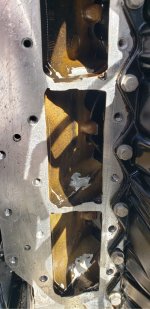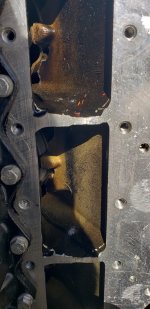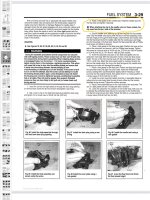I you installed the plastic washer under the seats, carbs need to come apart. did you replace the calibration pocket gaskets? If they leak it wont idle, will sneeze and pop back.
This is really, really painful, but after laying awake half the night replaying the work I’ve done….and your input, I have an admission of an error in past carb rebuilds.
I decided to check the carb needle seat and float installation. I removed one of the float bowls only to find a plastic washer under the float needle seat. I’m in total disbelief, since I absolutely don’t recall installing it. Obviously, I did. I also recall hearing from others, throughout this process, that the washer should be omitted, although I don’t understand why.
I have 3 manuals for my engine, although I primarily only reference the OMC and Seloc manuals. Since the Seloc manual was more convenient, I returned to the Seloc manual and have attached a page describing carb assembly. I highlighted the paragraph regarding the instruction to place the washer under the needle seat. Refer to attachment below. Interestingly, the OMC manual did instruct the installation of the washer.
So, my questions are: Was the omission of the gasket a subsequent tech bulletin….and why was it removed from the assembly, yet still included in the rebuild kits? It seems to me, removal of the washer, lowers the seat (and needle) only a fraction….which seemingly would still be within the tolerance range (11/16” - 1-1/16”) of the float drop, although it would also lower the top float position, potentially increasing the 1/32” space between float and carb body gasket. I also question if omission of the washer may possibly increase the potential of fuel leakage at the bottom of the seat?
Lastly, I also found the needle spring was attached to the back of the float, which is where I found it, as opposed to the position described in the Seloc manual (on the port side of the float chamber). Again, the OMC manual made no distinction on the position of the needle attachment to the float. I assume the wrong position may potentially cause binding of the needle in the seat.
Still, all things considered, since fuel was in the float chambers, what may have prevented fuel from being drawn into the crankcases.
Regardless, I am totally embarrassed and offer my apology for posting misleading information. That said, I’m hoping my optimism for progress may be warranted.
I hope you guys are still with me. Thanks.




